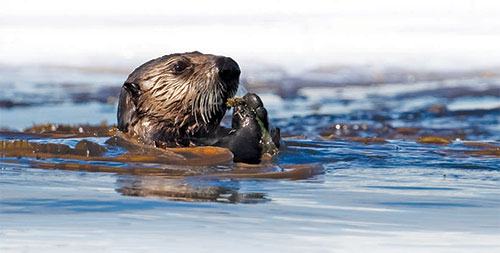
Wildlife Recovery Following the Exxon Valdez Oil Spill was Highly Variable Across Species
June 13, 2017
This information may have important implications when responding to other oil spills, when conducting damage assessment studies after spills and when considering the environmental risks associated with extracting and shipping oil.
“Because wildlife species in the spill area vary so much in terms of what they eat, habitats that they use, and their ability to rebound after a drop in numbers, researchers saw huge differences in how long it took for populations to recover,” said Dan Esler, a Research Wildlife Biologist with the U.S. Geological Survey and lead author of a recently released paper on the subject. “Some species were barely affected, others such as bald eagles, rebounded quickly, and other species took much longer to recover, such as sea otters.” In addition to differences in the time required for full recovery, USGS and collaborators from the U.S. Fish and Wildlife Service, Oregon State University, and the North Gulf Oceanic Society identified ecological factors that affected the degree of injury:
The USGS has previously led long-term studies of sea otters and harlequin ducks, two species that showed lack of recovery for over two decades after the spill. USGS Research Wildlife Biologist Dan Monson, noted “Sea otters were exposed to lingering oil in beach sediments long after shorelines appeared clean and oil exposure affected survival rates and population growth until at least the mid-2000s.” The paper reviewing scientific studies of wildlife recovery, entitled “Timelines and mechanisms of wildlife population recovery following the Exxon Valdez oil spill” is available in the journal Deep Sea Research II, as part of a special issue focused on sources of ecological variability in the Gulf of Alaska.
Editing by Mary Kauffman, SitNews
Source of News:
Representations of fact and opinions in comments posted are solely those of the individual posters and do not represent the opinions of Sitnews.
|
|||
